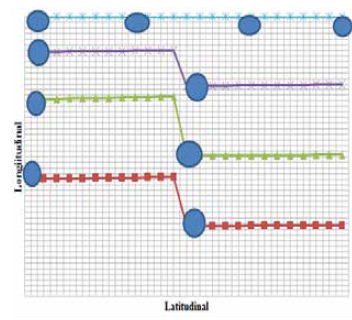ANALYTICAL STUDY OF HYDROKINETIC ENERGY POTENTIALS IN SOME TIDAL-RIVERS OF KANO STATE NIGERIA
Keywords:
Delft3D3D, Challawa, Kano State, three-dimensional numerical, electricityAbstract
Nigeria is heavily dependent on fossil fuel for electricity generation. With the rapidly diminishing of the fuel reserve and the increasingly negative effects of fossil fuels to the environment, government is considering exploiting alternative energy sources. However, the potential of harnessing other renewable sources, particular ocean energy, in Nigeria has not been fully realized. This study was carried out to identify the potential of harnessing ocean energy for electricity generation. Delft3D3D interactive modelling was used to create a three-dimensional numerical ocean model for some rivers in Kano State, Nigeria, which was calibrated against
measurement by a means of adjoin data assimilation approach. A set of reliable tidal speed and tidal elevation data was therefore generated to determine the types of tides available in aimed locations, the potential areas of installing river current turbines (RCTs), the total amount of electricity to be generated by RCT, the economic viability and the environmental benefits of using RCT in the studied areas. It was discovered that Tiga and Challawa are the areas with terrific prospect for tidal energy extraction. The total amount of electricity that can be generated by RCTs on those areas is about 8.86 GWh/year. The total amount of CO2 to be avoided is 1,333
tonnes per year. Owners of RCTs may be able to recover the cost of the system after 10 years and can make profits after that. The results are critical to public policy makers and potentialprivate investors on hydrokinetic energy in Nigeria for consideration.
Downloads





